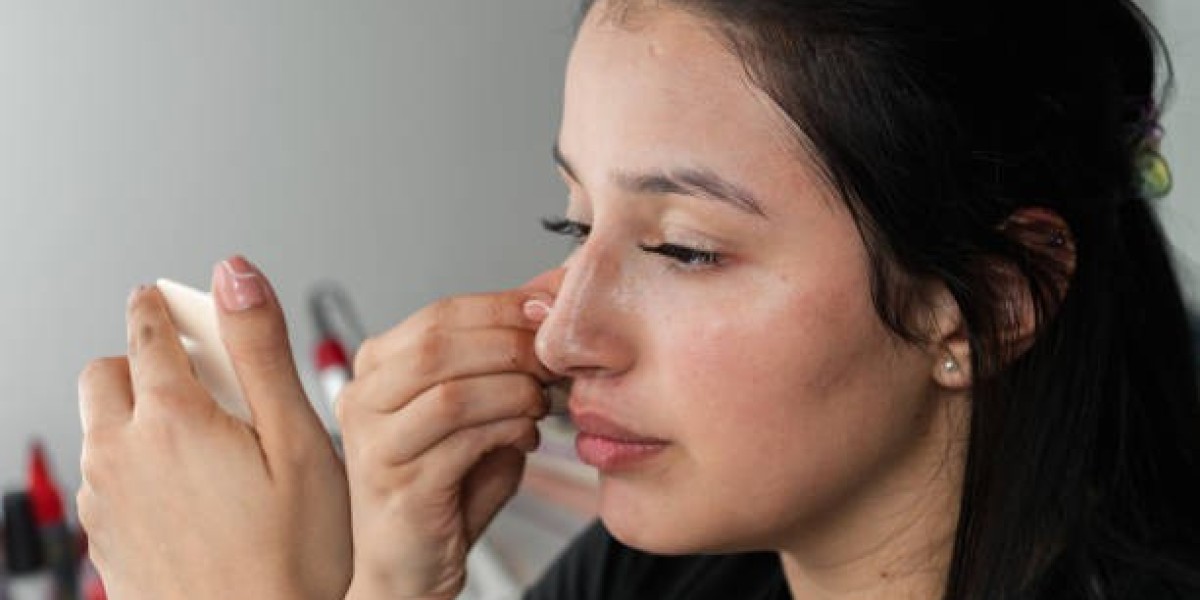Open pores are a universal skincare concern—those small openings on your face that seem to get bigger, darker, and harder to manage with time. Whether you're dealing with oily skin, blackheads, or uneven texture, understanding your pores is the first step to improving your complexion.
In this ultimate guide, we’ll cover everything you need to know about open pores treatment, including what causes them, how to treat them effectively, which ingredients really work, and when to seek professional help. By the end, you’ll have a clear roadmap to smoother, more refined skin.
What Are Pores?
Pores are tiny openings in the skin that allow oil and sweat to reach the surface. They’re essential for regulating body temperature and keeping skin hydrated. Each pore is connected to a hair follicle and a sebaceous gland, which produces sebum (natural oil).
There are two main types of pores:
Oil pores – connected to sebaceous glands (most visible on the face)
Sweat pores – less visible, found all over the body
Why Do Pores Become More Visible?
Pores are always there, but they become noticeable when:
Filled with oil, dirt, or dead skin
Stretched due to loss of elasticity
Inflamed from acne or poor skincare habits
Common causes of enlarged pores:
Excess sebum production
Hormonal changes
Poor exfoliation habits
Sun damage and aging
Genetics
Improper product use
Where Are Pores Most Noticeable?
You’ll find the most visible pores in the:
T-zone (forehead, nose, chin)
Cheeks (especially near the nose)
Around the mouth and sometimes the jawline
These areas typically produce more oil and are more prone to congestion.
Can You Really Shrink Your Pores?
You can't permanently change the size of your pores, but you can:
Unclog them
Reduce their appearance
Tighten the surrounding skin
Prevent them from stretching further
With the right care and consistency, your pores can become far less noticeable.
Best Skincare Routine to Minimize Pores
? Step 1: Cleanse Twice Daily
Use a gentle, non-comedogenic cleanser. Salicylic acid is ideal for oily or acne-prone skin.
? Step 2: Exfoliate 2–3 Times a Week
Chemical exfoliants: Salicylic acid (BHA) for deep cleansing
AHAs like glycolic acid: Smooth surface and brighten
Avoid physical scrubs with rough granules that can damage skin
? Step 3: Use a Hydrating Toner
Toners with niacinamide or witch hazel help reduce oil and calm the skin.
? Step 4: Apply a Pore-Refining Serum
Ingredients to look for:
Niacinamide
Retinol
Zinc PCA
? Step 5: Moisturize
Even oily skin needs moisture. Opt for:
Oil-free gel-based moisturizers
Non-comedogenic formulas
? Step 6: Sunscreen
Sun exposure breaks down collagen and enlarges pores over time. Use SPF 30+ daily.
Ingredients That Work for Pore Care
| Ingredient | Benefit |
|---|---|
| Salicylic Acid | Unclogs pores and reduces acne |
| Niacinamide | Regulates oil and tightens skin |
| Retinol | Boosts cell turnover and collagen |
| Clay | Absorbs excess oil and draws out debris |
| Zinc | Soothes and mattifies oily skin |
| Hyaluronic Acid | Hydrates without clogging |
Treatments That Can Help Shrink Pore Appearance
When skincare isn’t enough, professional treatments offer a deeper solution:
✔️ Microneedling
Boosts collagen and helps tighten pores
✔️ Chemical Peels
Exfoliate and promote fresh skin regeneration
✔️ HydraFacial
Deeply cleanses and removes debris from pores
✔️ Fractional Laser
Improves texture and reduces large pores
These treatments work best when tailored to your skin by a dermatologist.
Pore Myths to Stop Believing
Let’s bust some common misconceptions:
❌ Myth 1: You can open and close pores
Fact: Pores don’t have muscles. You can loosen debris or tighten skin, but not "open" or "close" them.
❌ Myth 2: Steam makes pores smaller
Fact: Steam softens debris for extraction but doesn’t permanently shrink pores.
❌ Myth 3: Pore strips fix the problem
Fact: They remove surface blackheads temporarily and can irritate the skin.
❌ Myth 4: Only oily skin has large pores
Fact: Any skin type can develop enlarged pores due to aging or poor care.
Natural Ways to Support Pore Health
In addition to skincare, your daily habits play a huge role:
✅ Stay hydrated
Water supports elasticity and skin renewal
✅ Eat a pore-friendly diet
Cut back on sugar, dairy, and greasy food. Add omega-3s, zinc, and antioxidants.
✅ Keep your phone and pillowcase clean
Bacteria transfer can clog pores
✅ Remove makeup every night
Sleeping in makeup is a fast track to clogged and stretched pores
When to See a Dermatologist
If your pores are:
Accompanied by breakouts or texture
Resistant to skincare
Causing scarring
…it’s time to consult a professional.
A dermatologist can identify the underlying cause and recommend personalized treatments for lasting improvement.
Final Thoughts: Your Path to Pore Confidence
Pores are a normal and necessary part of your skin—but that doesn’t mean you have to live with rough, uneven texture. By understanding what causes enlarged pores and treating them with the right tools and routines, you can achieve visibly smoother, clearer skin.
Whether you need simple skincare changes or advanced treatments, consistency and patience are key. And when you're ready for expert care, Tajmeels Clinic provides customized solutions for open pores using the latest dermatological techniques in a professional setting.
Frequently Asked Questions (FAQs)
Q1: Can I shrink my pores overnight?
No. Pore refinement takes consistent care and time—expect 4–6 weeks for visible change.
Q2: Is it safe to pop blackheads?
It’s better to leave extractions to professionals. DIY popping can enlarge pores and cause scarring.
Q3: Do I need different products for day and night?
Yes. Daytime focuses on protection (SPF), while night is ideal for repair (retinol, exfoliants).
Q4: Will large pores come back after treatment?
They can if not maintained. Stick with a regular skincare routine to keep them refined.
Q5: What’s the best age to start pore care?
It’s never too early. Teens benefit from proper cleansing, while adults should focus on anti-aging support.






